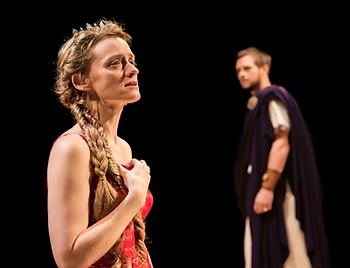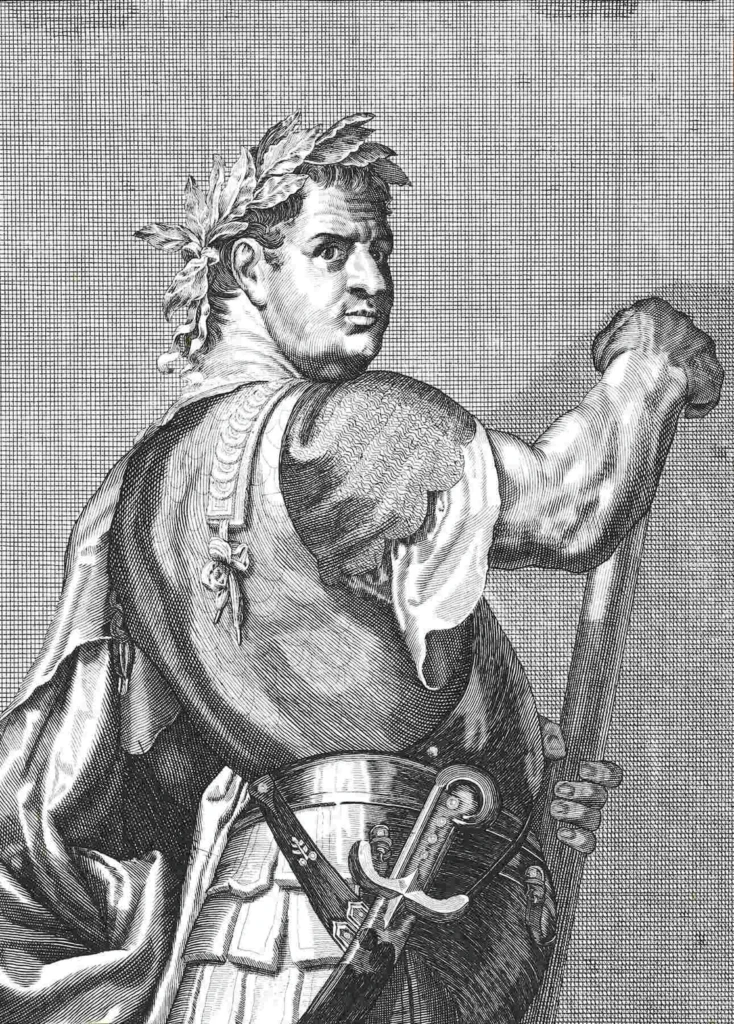The end of the affair of Titus and Berenice

How perverse of Krawczuk to end his story here without giving us the conclusion of the love of Titus and Berenice. Perhaps he wanted us to pick up Cassius Dio and find it for ourselves? But Cassius gives us very little. Four years after Vespasian seized the throne, Berenice and her brother, King Herod Agrippa II, came to Rome:
Berenice was at the very height of her power and consequently came to Rome along with her brother Agrippa. The latter was given the rank of praetor while she dwelt in the palace, cohabiting with Titus. She expected to marry him and was already behaving in every respect as if she were his wife, but when he perceived that the Romans were displeased with the situation, he sent her away. (Cassius Dio, Roman History, LXV 15).
That’s it.
Racine gives us more, imagining their good bye:
TITUS
N’accablez point, Madame, un prince malheureux ;
Il ne faut point ici nous attendrir tous deux.
Un trouble assez cruel m’agite et me dévore,
Sans que des pleurs si chers me déchirent encore.
Rappelez bien plutôt ce coeur, qui tant de fois
M’a fait de mon devoir reconnaître la voix.
Il en est temps. Forcez votre amour à se taire,
Et d’un oeil que la gloire et la raison éclaire,
Contemplez mon devoir dans toute sa rigueur.
Vous-même contre vous fortifiez mon coeur.
Aidez-moi, s’il se peut, à vaincre sa faiblesse,
À retenir des pleurs qui m’échappent sans cesse.
Ou si nous ne pouvons commander à nos pleurs,
Que la gloire du moins soutienne nos douleurs,
Et que tout l’univers reconnaisse sans peine
Les pleurs d’un empereur, et les pleurs d’une reine.
Car enfin, ma Princesse, il faut nous séparer.
BÉRÉNICE.
Ah cruel ! Est-il temps de me le déclarer ?
Qu’avez-vous fait ? Hélas ! Je me suis crue aimée.
Au plaisir de vous voir mon âme accoutumée
Ne vit plus que pour vous. Ignoriez-vous vos lois,
Quand je vous l’avouai pour la première fois ?
À quel excès d’amour m’avez-vous amenée ?
Que ne me disiez-vous : Princesse infortunée,
Où vas-tu t’engager, et quel est ton espoir ?
Ne donne point un coeur, qu’on ne peut recevoir.
Ne l’avez-vous reçu, cruel, que pour le render
Quand de vos seules mains ce coeur voudrait dépendre?
Which we might translate along these lines:
TITUS
Madame, do not kick a man when he is down.
And let’s not wallow in self-pity.
It’s cruel enough that this pain devours me
And robs me of my strength.
Instead, please remember that I have always
Obeyed the call of duty.
Now, such a time has come, and our love must yield.
Let’s examine with the eye of reason
My duty in all its cursed harshness.
Set your own grievance aside and try to help me here.
Strengthen my heart, drive away its weakness,
Stop my tears which, once they begin to flow, may never stop.
Or if we cannot stop them, then at least
May our pride in our own virtue sustain us in our grief.
Let all the world intuit unseen
These tears of an emperor and of his queen.
My Princess, we must part.
BERENICE
Oh, cruel man! How you wound my heart!
What have you done? I believed you.
I believed that I was loved! My soul, delighted in
Your sweet presence and lived only for you.
Where were your Roman laws then
When you first told me of your love?
Did you say: “Oh, unfortunate Princess,
How naïve are your hopes! Do not be deceived,
Do not give a heart that cannot be received.”
Did you receive it only to throw it away so
Without ever warning me?
Photo: Anne-Marie Duff in Berenice at the Donmar Warehouse, London. Photograph: Johan Persson
The Book (Rome and Jerusalem) is here:





